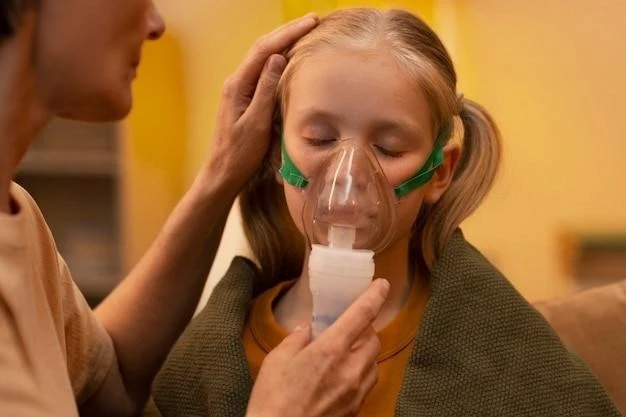Introduction to Rhinotillexomania
Nose picking is a common yet benign behavior. When nasal picking becomes compulsive‚ it is termed rhinotillexomania.
Definition and Overview
Nose picking‚ a common but typically benign behavior‚ can escalate to a compulsive level known as rhinotillexomania. This psychiatric condition may lead to significant harm and complications if left untreated.
Causes and Risk Factors
Chronic nose picking‚ known as rhinotillexomania‚ can be triggered by various factors‚ including stress‚ anxiety‚ and obsessive behaviors.
Psychological Factors
Psychological factors such as stress‚ anxiety‚ and obsessive-compulsive tendencies can contribute to the development of rhinotillexomania‚ a condition characterized by compulsive nose picking.
Behavioral Triggers
Behavioral triggers for rhinotillexomania may include instances of stress‚ anxiety‚ or obsessive-compulsive behaviors‚ prompting individuals to engage in compulsive nose picking that can lead to self-harm.
Symptoms and Complications
Compulsive nose picking‚ termed rhinotillexomania‚ can lead to self-harm and complications such as epistaxis and nasal septal perforation.
Physical Symptoms
Compulsive nose picking‚ known as rhinotillexomania‚ can result in physical symptoms such as nasal septal perforation‚ epistaxis‚ and destruction of nasal tissues due to repetitive and harmful picking behavior.
Potential Health Complications
Complications of rhinotillexomania can include infections due to nasal trauma‚ chronic inflammation of nasal tissues‚ stenosis of nasal cavities‚ and even lacrimal obstruction‚ highlighting the potentially serious health consequences of this compulsive behavior.
Diagnosis and Assessment
Diagnosing rhinotillexomania involves a comprehensive evaluation using clinical examinations and specialized questionnaires to assess nasal picking behaviors and associated distress levels.
Rhinotillexomania Questionnaire
A specialized questionnaire‚ such as the Rhinotillexomania Questionnaire‚ is utilized to evaluate behaviors‚ levels of distress‚ techniques‚ and associated complications related to compulsive nose picking in individuals‚ aiding in the diagnosis and assessment of this condition.
Clinical Examination
Assessment of rhinotillexomania through clinical examination involves evaluating nasal structures for signs of trauma‚ inflammation‚ and complications resulting from compulsive nose picking‚ aiding in the diagnosis and management of this condition.

Treatment Options
Effective treatments for rhinotillexomania include talk therapy‚ counseling‚ and pharmacological interventions to address compulsive nose picking behavior.
Talk Therapy and Counseling
Talk therapy and counseling play a crucial role in addressing rhinotillexomania‚ providing individuals with the opportunity to explore underlying triggers‚ develop coping mechanisms‚ and work towards behavior modification to reduce compulsive nose picking behavior.
Pharmacological Interventions
Pharmacological interventions can be utilized in the treatment of rhinotillexomania to help manage compulsive nose picking behaviors. Medications may be prescribed to address underlying factors contributing to the condition and aid in behavior modification.
Effective management of rhinotillexomania involves implementing behavioral modification techniques and encouraging lifestyle changes to reduce compulsive nose picking behaviors.

Management Strategies
Implementing behavioral modification techniques is crucial in managing rhinotillexomania. These strategies aim to address and reduce compulsive nose picking behaviors through interventions that encourage self-awareness and habit reversal.
Lifestyle Changes
Implementing appropriate lifestyle changes is essential in managing rhinotillexomania. These changes may involve creating a structured daily routine‚ reducing stress triggers‚ practicing healthy coping mechanisms‚ and fostering a supportive environment to promote overall well-being and reduce the urge for compulsive nose picking.
Research and Case Studies
Recent studies and case reports on rhinotillexomania shed light on the impact of compulsive nose picking behaviors and associated health outcomes.
Recent Findings on Rhinotillexomania
Recent research on rhinotillexomania delves into the compulsive nature of nose picking behaviors‚ exploring the impact on individuals’ mental health and the potential connection to other psychiatric disorders. Studies highlight the need for comprehensive management strategies to address this compulsive behavior effectively.
Case Studies and Clinical Reports
Various case studies and clinical reports have examined individuals with rhinotillexomania‚ highlighting the impact of compulsive nose picking on physical health and emphasizing the importance of appropriate diagnosis and treatment interventions.
Conclusion
In conclusion‚ rhinotillexomania poses significant challenges due to its compulsive nature and potential health complications. Diagnosis and treatment interventions‚ including talk therapy‚ counseling‚ behavioral modification techniques‚ and pharmacological options‚ play vital roles in managing this condition effectively. Further research and clinical reports are essential to enhance our understanding and improve outcomes for individuals affected by rhinotillexomania.
